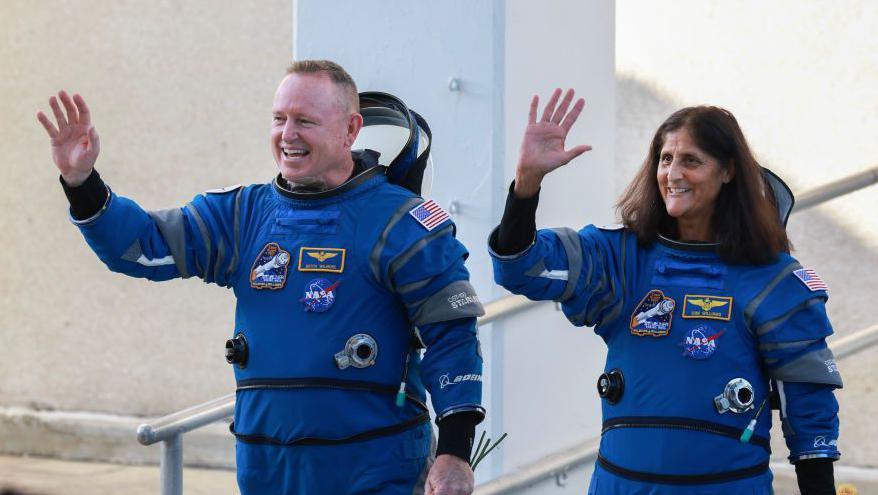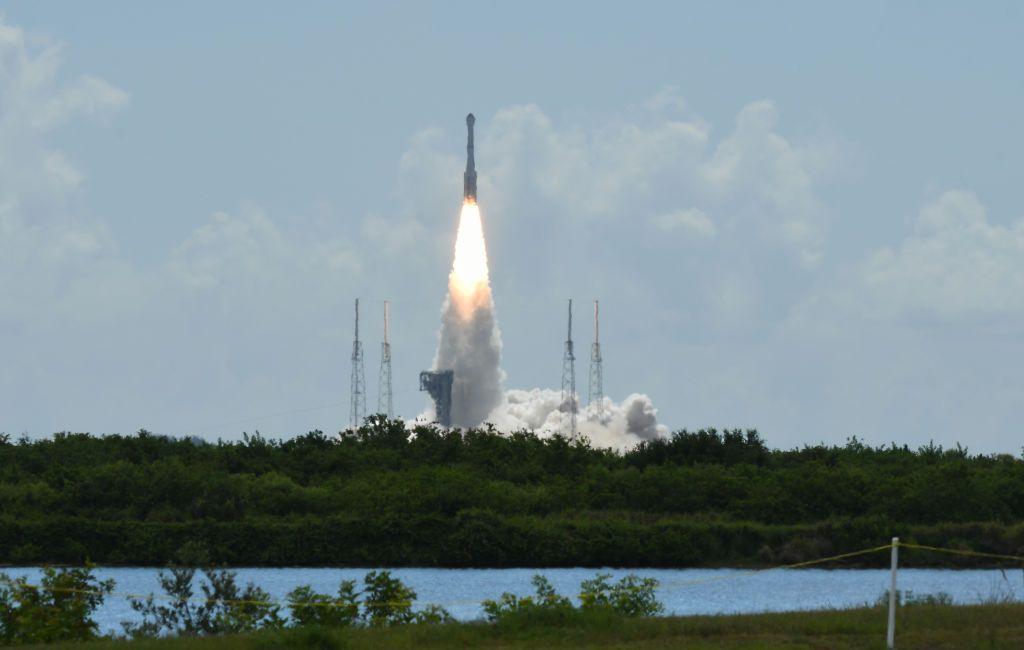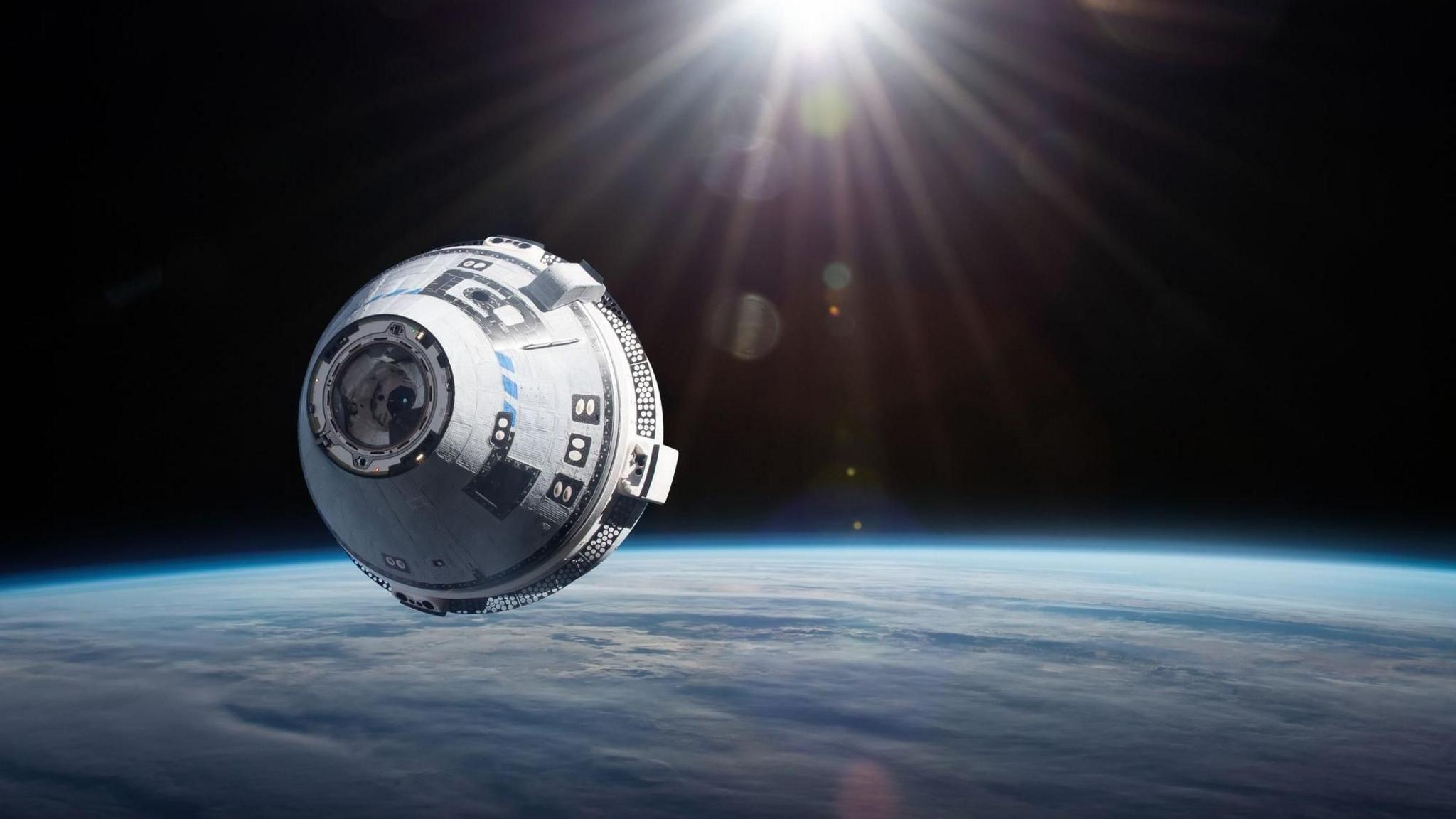Nasa astronauts still 'stuck in space'

Butch Wilmore and Suni Williams have now been in space for more than 50 days
- Published
Nasa say that they still don't know when two of their astronauts who are stranded on the International Space Station (ISS) will return to Earth.
Butch Wilmore and Suni Williams set off from Florida on Boeing's Starliner spacecraft on 5 June after multiple delays.
They were only meant to stay in space for around a week, however their craft developed a number of issues - meaning they were unable to head back.
The US space agency say that they're making "great progress" as they try to solve the problem, but they haven't yet set a return date for the astronauts.
Astronauts 'stuck in space' while their craft is repaired
- Published21 June 2024
Delayed Boeing Starliner docks into ISS
- Published7 June 2024
Crew launch to International Space Station delayed again
- Published18 May 2024
What's the latest?

Boeing Starliner's finally blasted off on 5 June after a series of delays
Teething issues with new spaceships aren't uncommon.
Nasa revealed that they discovered a number of issues with the Starliner spacecraft, including several helium leaks in its capsule.
Butch Wilmore and Suni Williams are the first crew to fly Starliner, which Boeing and Nasa hope will make regular trips to the ISS in the future.
Another private company, Space X, owned by Elon Musk, has already been making the journey using their own rockets for the past four years.
Nasa has previously said that the spacecraft has enough fuel to stay in orbit until mid-August.
The US space agency explained that they are trying to solve the issues with Starliner, however they have a number of back-up plans if they are unable to fix them in time.
What is Boeing's Starliner?

The Boeing Starliner is a capsule designed to transport crew and equipment into space.
Nasa asked Boeing - which is a private company that makes planes - to develop the Starliner so they could have a US-made spacecraft to transport crew to and from the ISS.
It's made up of two main sections - a reusable crew module, which can fit up to seven astronauts inside, and a service module, with thrusters and engines to power the craft.
The capsule, which is where the astronauts sit, has been designed to be as safe as possible and has an escape system that propels the crew away from the rocket, if there's a problem during launch.
